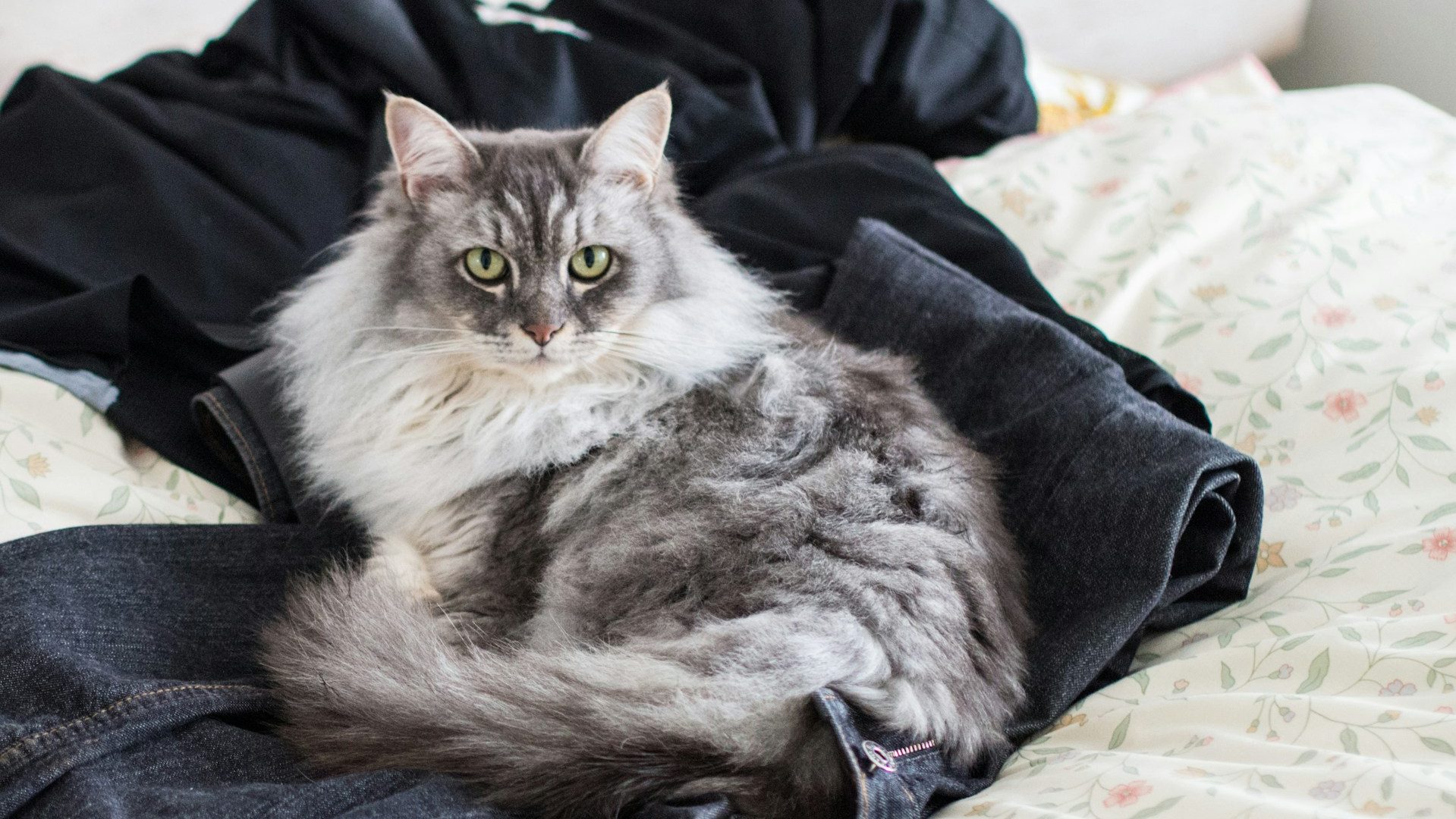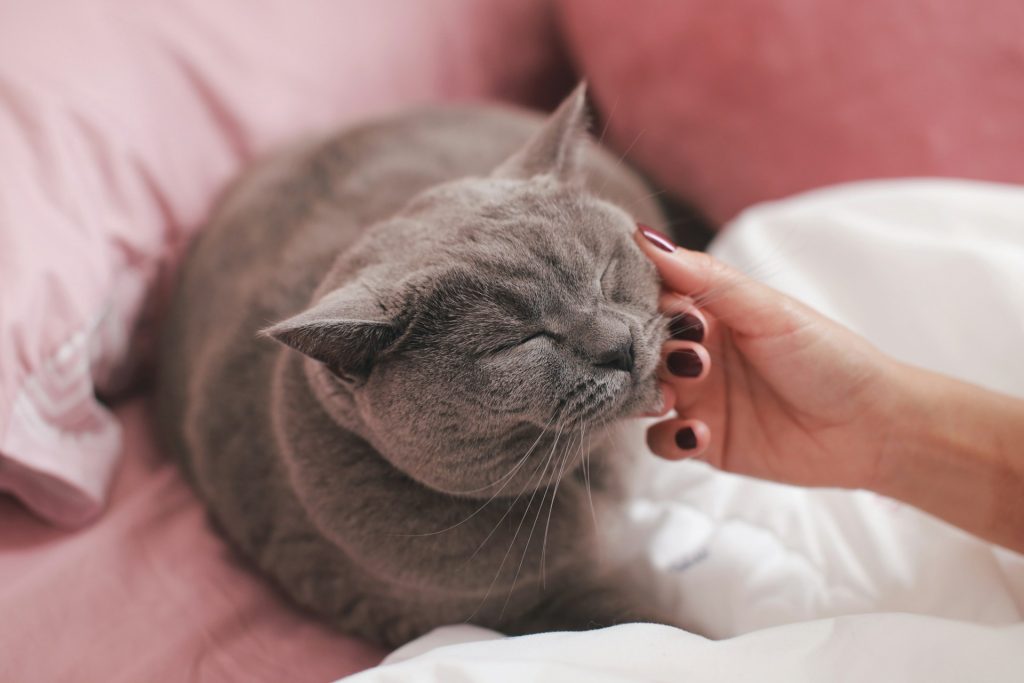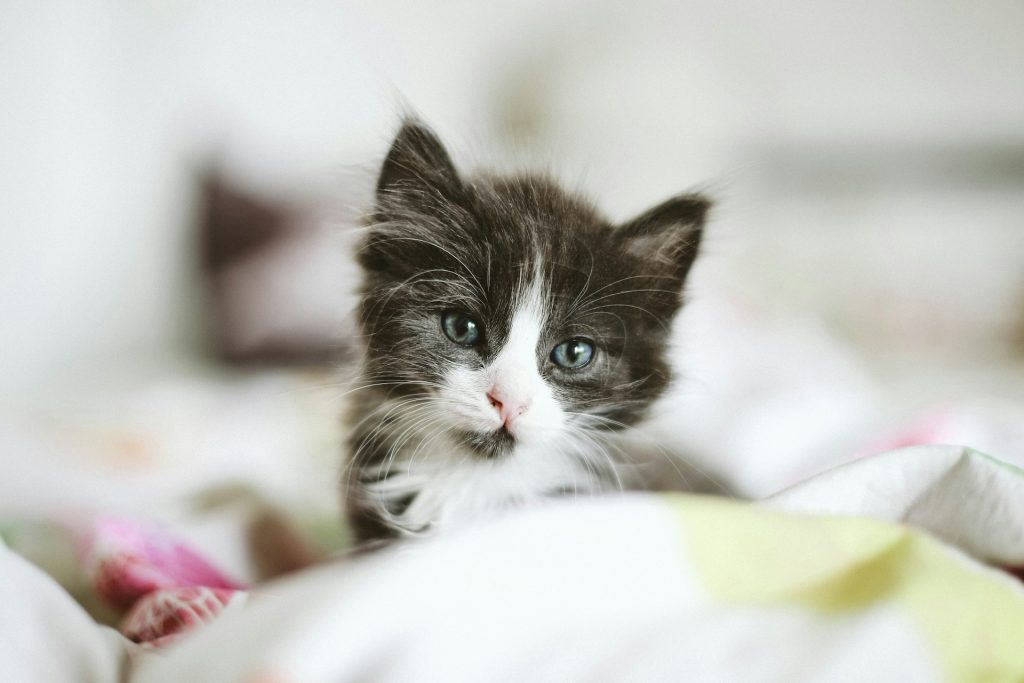Table of Contents
Cats may find the warmth comforting and soothing, often choosing the foot of the bed as their nighttime retreat. This behavior provides them with a sense of security but also allows them to maintain their personal space while still being close to their human companions. Additionally, the body heat you emit during sleep acts as a natural attractant, creating an ideal environment for your feline friend.
Moreover, cats feel safe when sleeping at their feet, a spot that offers both proximity to their beloved owner and an opportunity for personal space. As creatures of habit, they are drawn to this particular area night after night, reinforcing the bond between pet and cat parents.
Understanding Your Cat’s Sleep Habits
Recognizing your cat’s sleep preferences can deepen your understanding of their behavior and enhance the connection you share, as they find solace and safety in being close to you.
The Instinctual Appeal of Feet for Security
Your feet provide a sense of safety for your cat. The rhythmic rise and fall of your body while you sleep reassures them, while the positioning at your feet allows them to stay alert to any potential threats.
1. Seeking Protection While They Sleep
Cats innately seek out secure spaces for rest. Your presence offers a sense of protection, allowing them to sleep soundly with the confidence that they are not alone. Your feet, in particular, represent a sanctuary that is both safe and familiar.
2. Strategic Position for Quick Escape
Positioning themselves at your feet also provides your cat with a strategic vantage point. From here, they can quickly access their litter box or another safe space in case of an emergency, ensuring their safety and well-being.
Comfort and Warmth: The Lure of Human Feet
Human feet naturally emit body heat, creating a comfortable spot at the end of the bed where cats can enjoy a soft and warm resting place.
Why a Warm Spot Matters to Your Cat
A warm spot is crucial for cats, particularly as the temperature in the room drops during the night. They depend on external sources of warmth to maintain their body temperature, and the heat from your feet provides that necessary comfort.
Behavioral Aspects of Cats Sleeping at Feet
As a cat parent, understanding the behavioral reasons behind your cat’s choice to sleep at your feet can enhance your relationship and provide insights into their needs for security and comfort.
Marking Their Human as “Owned”
When cats sleep at your feet, they are also engaging in a subtle form of marking behavior. By resting nearby, they signal to other pets and people that they have a strong bond with their humans.
Close Proximity Without Overheating
The foot of the bed offers a comfortable place to sleep that allows your cat to enjoy the company of their human companions without the risk of overheating. This proximity is a delicate balance between affection and comfort.

Emotional Bonds and Sleep Positions
As the seasons change, so may your cat’s preferred spot on the bed, reflecting their dynamic emotional bond with you and their ever-changing comfort needs.
Affectionate Paws: Love Through Sleeping Arrangements
Your role as a cat parent comes with the understanding that your cat’s chosen sleeping arrangements are an expression of trust and affection.
A Gesture of Trust and Companionship
Choosing to sleep at your feet is a gesture of trust and companionship. It signifies that your feline friend feels secure and connected to you, valuing the closeness that this position provides.
Do Cats Sleep at Your Feet as a Form of Protection?
Experts like Kate Luse from Cat Behavior Consulting and Nicole Savageau, a veterinarian for The Vets, suggest that cats may sleep at your feet as a form of protection, seeking extra security in their vulnerable state of rest.
The Protective Watch Over Their Human
Even as they seek protection, cats may also be providing it. By sleeping at the foot of the bed, they can keep a protective watch over their human, ready to alert or escape should the need arise.
Sleep Environment Considerations
Cats are highly sensitive to their sleeping environments, which can profoundly affect their comfort and sense of security. Understanding and optimizing the space where your cat rests can enhance their well-being and strengthen the bond between you and your feline companion. Careful consideration of bedding choices, placement, and the overall sleep environment can lead to peaceful nights for both you and your cat.
Optimal Bedding Choices for Feline Comfort
When pondering the question, “Why does my cat sleep at my feet?” the comfort of your bedding cannot be overlooked. Cats typically enjoy soft surfaces that provide warmth and a sense of security. Your bed, with its layers of blankets and pillows, often becomes an inviting spot for them. Additionally, the tendency for cats to sleep against something, like your legs, can be attributed to their desire for a secure and cozy nook.
Evaluating Bedding Type for Your Cat’s Preferences
To cater to your cat’s preferences, observe their behavior to determine their favored sleeping surfaces. Some cats may prefer the plushness of a down comforter, while others might gravitate towards the structured support of a firmer mattress. It’s essential to provide a variety of options to meet the diverse needs of cats as individuals. A comfortable place to sleep is vital for their health and happiness, so take the time to evaluate and provide bedding that aligns with their unique inclinations.
Encouraging Comfortable and Non-Disruptive Sleep Spots
While your cat enjoys sleeping at your feet, it’s essential to ensure their chosen spot does not disrupt your sleep. Encouragement, rather than punishment, is key to guiding your cat towards more suitable sleeping areas. Offering an attractive alternative, such as a cozy blanket or a cat bed nearby, can help transition them to a spot that is comfortable for both you and your feline friend.
Introducing Orthopedic Options for Aging Felines
As cats age, their joints and muscles may require additional support. Introducing orthopedic bedding can provide aging felines with the comfort they need to rest well. These specialized beds are designed to relieve pressure points and offer a warm, safe, and secure space that accommodates their changing physical needs. By addressing the comfort of older cats, we can help ensure they continue to enjoy restful sleep through their golden years.
Recognizing Unusual Sleeping Behavior
Unusual changes in your cat’s sleep habits can be a sign of underlying health issues. It’s crucial to stay alert to any significant shifts in where or how your cat sleeps. A cat that suddenly prefers a cooler spot or becomes reluctant to jump onto higher surfaces may be experiencing discomfort or pain. Monitoring these changes and consulting with a veterinarian can help address potential health concerns early on.
When Sleep Patterns May Indicate Health Concerns
Changes in sleep patterns can sometimes indicate health concerns in cats. If your feline companion begins seeking out cooler spots or shifts their usual sleeping location, it might be a sign of discomfort or a need for a change in their environment. Paying attention to such cues and seeking veterinary advice can help ensure your cat receives the care they needs to stay healthy and comfortable.
Decoding Changes in Your Cat’s Sleeping Locations
When a cat alters their sleeping locations, it’s essential to decode the reasons behind these changes. A cat that suddenly avoids their usual spot at your feet could be signaling discomfort or a need for a different type of bedding. Observing your cat’s behavior and making adjustments to their sleep environment can help maintain their well-being and comfort.

Frequently Asked Questions About Feline Slumber
Cats’ sleeping patterns and behaviors often stir curiosity among their human companions. Many questions arise as to why cats choose certain sleeping spots, such as at the owner’s feet, and what each sleeping position might indicate about their mood or health. Addressing these inquiries can enhance our understanding of feline behavior and strengthen the bond with our furry friends.
1. Addressing common curiosities regarding cats and sleep
The protective nature of cats during human sleep hours can manifest in various ways, including cats sleeping at your feet. While cats often sleep near their owners, it’s rare for them to have a protective response to danger as humans understand it. Instead, they may react to changes in their environment that make them feel less secure, such as unfamiliar noises or movements.
2. Is my cat staying warm enough at night?
Concerns about a cat’s warmth during sleep are common among pet owners. Cats typically regulate their body temperature effectively, but during colder months, they may seek out warmer spots, such as snuggling at your feet under the blankets. Providing a comfortable place to sleep with appropriate warmth is essential, especially for kittens and older cats who may need extra heat.
3. The protective nature of cats during human sleep hours
Cats often sleep with their humans as a form of companionship, but there’s also an element of protection in this behavior. While not necessarily guarding against danger, sleeping at your feet allows cats to stay aware of their surroundings and ensure a quick escape route if needed. This instinctual behavior highlights the complex nature of feline companionship during rest.
Expert Insights on Cat Sleeping Behavior
Understanding cat sleep behavior requires a blend of observation and expertise. Cats have evolved with instincts that influence their sleep patterns, balancing their roles as predators and prey. Expert insights from veterinarians and behavior specialists can help cat owners interpret these behaviors and provide environments that cater to their feline’s natural inclinations.
Interpreting Feline Sleep Through Professional Eyes
Professional insights into cat sleep behavior can unravel the intricacies of why a cat sleeps at your feet. Veterinarians and feline behavior specialists suggest that this choice of location can be attributed to a variety of reasons, from seeking warmth and comfort to feeling safe and secure. A deeper understanding of these behaviors can greatly benefit the human-cat relationship.
Insights from Veterinarians and Feline Behavior Specialists
Veterinarians and behavior specialists provide valuable insights into the reasons your cat selects specific sleeping spots. Factors such as the cat’s need for an escape route, individual preferences for comfort, and the instinct to remain close to human companions play significant roles in where a cat chooses to sleep. Recognizing that cats are individuals with unique needs can help owners create a nurturing sleep environment for their pets.
Beyond the Feet: Exploring Cat Sleep Positions
Cats exhibit a variety of sleeping postures that extend well beyond the familiar scene at the foot of the bed. Each position your cat assumes can offer insights into their mood and health. While some cats sprawl out in a relaxed ‘Superman’ pose, others may adopt protective postures or seek the highest perch available. Understanding the full spectrum of a cat’s sleeping habits provides a window into their well-being and environmental comfort.
From Superman Pose to Curled in a Ball: Variations in Cat Naps
Cats often sleep in positions that optimize their body heat retention and safety. The classic curled-up ‘furball’ posture is a prime example, creating a cozy nest that conserves warmth and shields the abdomen. Observing these various napping arrangements can lend clues about whether your feline feels safe and comfortable in their environment.
What Different Sleeping Positions Reveal About Your Cat
The way a cat may be sleeping can be a subtle communication of their inner state. A stretched-out position might indicate relaxation and trust in the environment, while a tucked-in, paws-under body could signal a need for security. Attentive pet owners can learn to read these positions as indicators of comfort, stress, or illness, allowing for a deeper understanding and connection with their feline friend.

Ensuring Your Cat’s Nighttime Harmony
Achieving a balance where you and your cat enjoy restful sleep requires consideration of their nocturnal nature. Creating a sleep-friendly environment that caters to your cat’s sleeping preferences can reduce nighttime disturbances. This might include providing a dedicated cat bed or a perch where your cat can observe the room, offering them a sense of security and serenity throughout the night.
Strategies for Balancing Your and Your Cat’s Sleep Needs
Accommodating your cat’s nocturnal habits while preserving your sleep quality can be managed with routine and environmental adjustments. Establishing a consistent bedtime for play and feeding can help sync your cat’s sleep cycle with yours, leading to undisturbed nights and a harmonious living space for both of you.
When to Accommodate and When to Redirect Feline Sleep Habits
While it’s important to provide cozy sleeping spots for your cat, it’s equally crucial to set boundaries. If your cat chooses to sleep at your feet and this disrupts your sleep, gently guide them to an alternate comfortable location. Understanding and respecting each other’s sleep needs fosters wellness and strengthens the bond between you and your cat.
Concluding Thoughts on Your Cat’s Nighttime Rituals
As night falls, the dance of finding the perfect sleep arrangement commences. Recognizing and adapting to your cat’s nighttime behaviors can enhance the relationship you share. Embracing their quirks and comforts not only ensures your cat’s well-being but can also solidify the trust and affection inherent in your unique human-feline bond.
Embracing the Purr-Fect Sleep Partner at Your Feet
When your cat feels the need for warmth or security, they might sleep at your feet. This behavior is a testament to the trust and affection your cat has for you. Embrace these moments, as they reflect a strong bond and the instinctive need of your feline companion to feel connected and protected in your presence.

Hi, I’m Zoey, a devoted mom to two charming Siamese cats. My passion lies in assisting fellow pet owners in providing optimal care for their cats. On CatsEuphoria, I share practical tips and relatable stories, inviting you to join me in appreciating the authentic bond between humans and our beloved feline companions.




